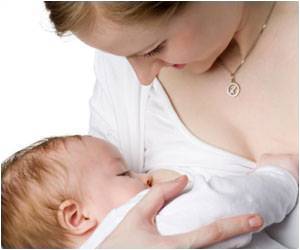Highlights
- Breast milk contains a blend of proteins, fats and sugars that help protect babies against bacterial infections.
- Recent research has found that the sugars in the milk enhance the effectiveness of the antibacterial proteins already present.
- The oligosaccharides in the milk killed the bacteria directly and some also physically broke down the biofilms that the bacteria form to protect themselves.
New Tool To Fight Bacterial Resistance
The growing problem of bacterial resistance to antibiotics which causes 23,000 deaths annually, was the motivation for the research.
"We started to look for different methods to defeat infectious bacteria. For inspiration, we turned to one particular bacteria, Group B Strep. We wondered whether its common host, pregnant women, produces compounds that can either weaken or kill strep, which is a leading cause of infections in newborns worldwide," Townsend said.
In a pilot study, Townsend’s lab collected five samples. They found that the sugars from one sample nearly killed an entire strep colony. In another sample, the sugars were moderately effective while the remaining three samples exhibited a lower level of activity.
"For most of the last century, biochemists have argued that proteins are most important and sugars are an afterthought. Most people have bought into that argument, even though there’s no data to support it," Townsend said. "Far less is known about the function of sugars and, as a trained glycoprotein chemist, I wanted to explore their role."
Instead of searching for proteins in human milk with antimicrobial properties, Townsend and his colleagues turned their attention to the sugars, which are considerably more difficult to study.
The research team collected human milk carbohydrates, also called oligosaccharides, from a number of different donor samples and profiled them with a mass spectrometry technique that can identify thousands of large biomolecules simultaneously.
The compounds were added to strep cultures. They found that some of these oligosaccharides killed the bacteria directly and some also physically broke down the biofilms that the bacteria form to protect themselves.
"Our results show that these sugars have a one-two punch," said Townsend. "First, they sensitize the target bacteria and then they kill them. Biologists sometimes call this ’synthetic lethality’ and there is a major push to develop new antimicrobial drugs with this capability."
By dosing strep cultures with a mixture of milk sugars and antimicrobial peptides from human saliva, the researchers also showed that the sugars’ ability to break down biofilms can also enhance the effectiveness of the other antimicrobial agents that breast milk contains.
In follow-up studies the team has also shown that the milk sugars’ antimicrobial activity extends to a number of other infectious bacteria, including two of the six "ESKAPE" pathogens that are the leading cause of hospital infections worldwide.
Reference
- Steven Townsend et al., Human Milk Oligosaccharides Exhibit Antimicrobial and Anti-Biofilm Properties Against Group B. Streptococcus, American Chemical Society 254th National Meeting & Exposition (2017).
Source-Medindia
















